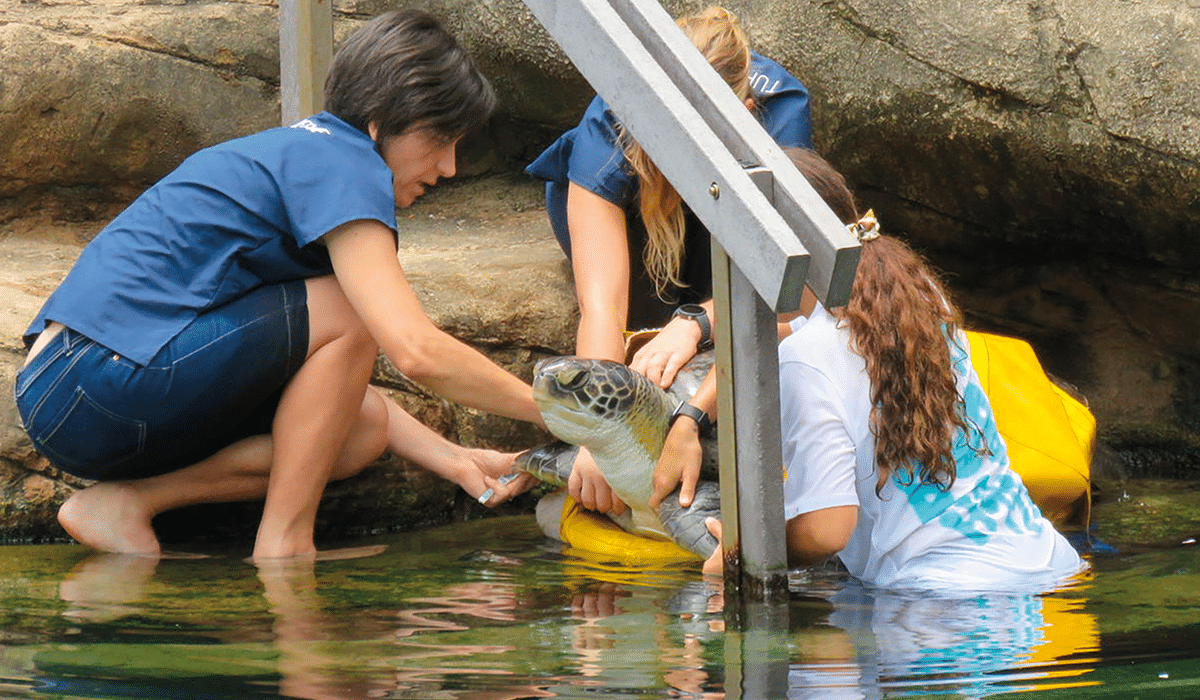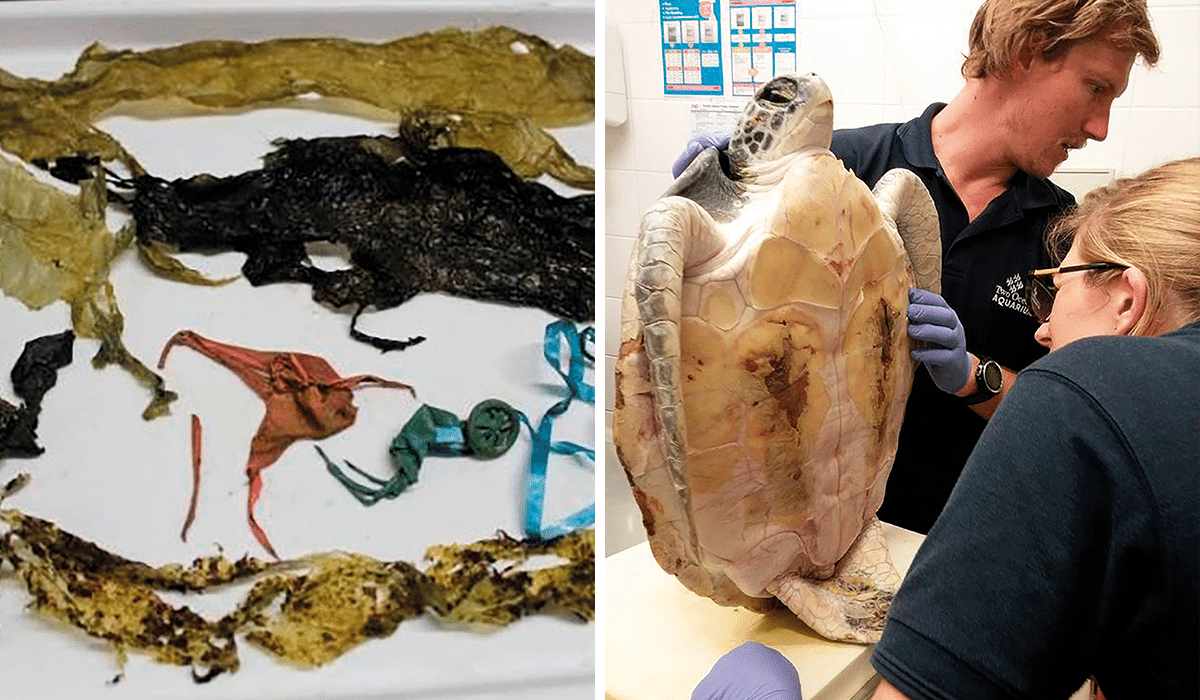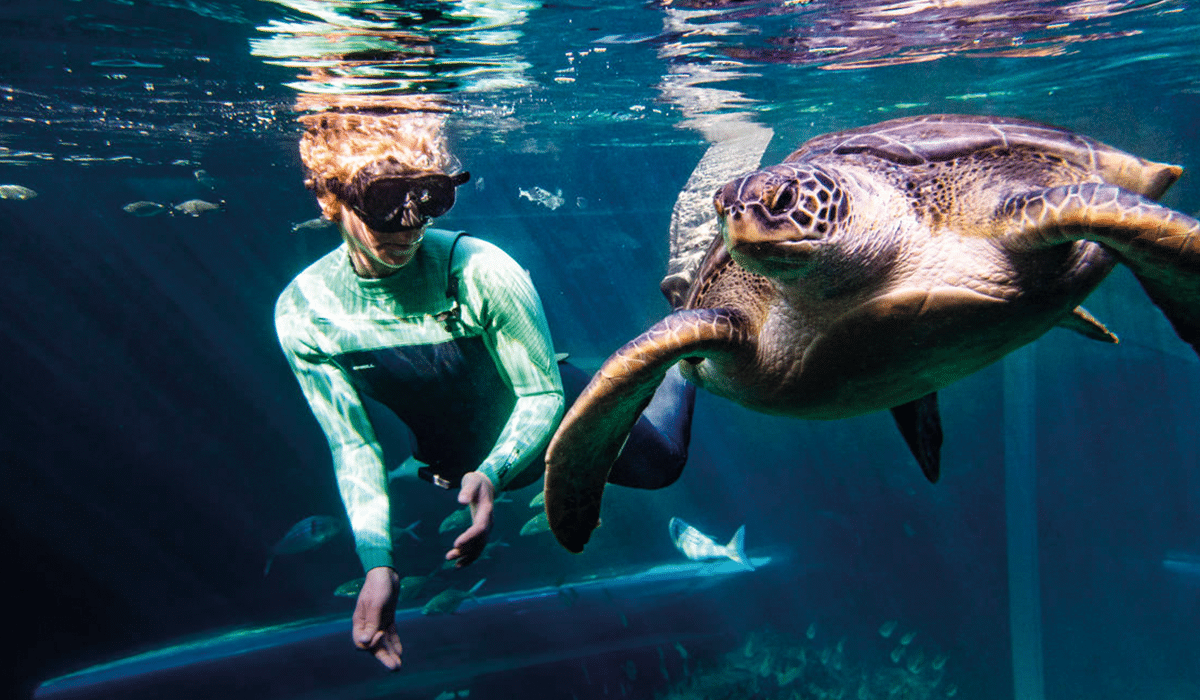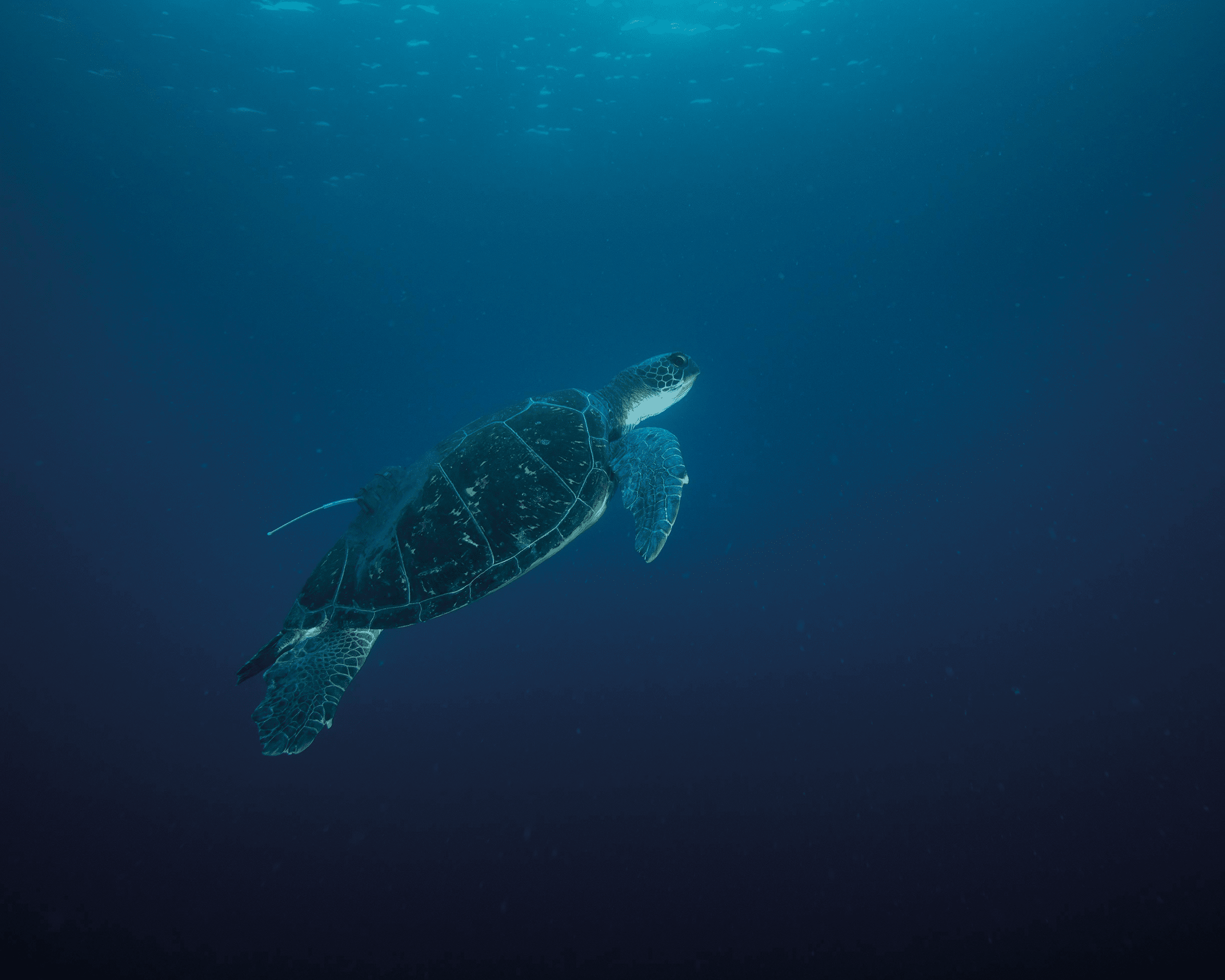Fitting turtles with clever tracking is providing a wealth of information for researchers.
Right now, bob the green turtle is somewhere in the southern Atlantic ocean riding the surface currents and doing loops off the coast of Hout Bay in Cape Town. Eight years ago, Bob was found washed up on the shore, exhausted and near death, with infected cuts and a broken shell.
Talitha Noble, conservation manager at Two Oceans Aquarium Foundation and one of Bob’s primary caregivers during the eight-year rehabilitation journey, says Bob is doing well so far. How does she know this?
Well, because Bob was fitted with clever tracking before being released earlier this year. These trackers enable the Two Oceans family to check in on Bob’s movements around southern Africa.

Satellite feed
Probably most sophisticated of Bob’s tracking tech is a satellite tag, a top-shell-mounted radio transmitter. Every time Bob surfaces for air, the tag emits signals that are detected by satellites orbiting the Earth, which means that a turtle can be tracked even if they move thousands of kilometres away from where they were released.
These tags provide a wealth of information researchers can use to understand turtles better – from GPS coordinates and depth to water temperature, dive time and swimming speed.

Tags
In addition, Bob has a flipper tag, which is the most common method for tracking turtles. This small and unobtrusive device, usually made of some kind of metal, is attached to a turtle’s flipper. These tags help conservationists and scientists identify animals and include important info like the date the animal was tagged and where it was released.

Sonar
Finally, Bob has also been fitted with an acoustic tag. These tags can be injected or surgically implanted, or attached to the outside of the animal. They transmit a high-frequency sound, or ‘ping’, that can be heard as far as half a kilometre away.
Receivers to capture the sound are placed at various locations along the coastline and makes it possible to follow the movements of a tagged animal. According to Noble, giving an animal more than one tag is an effective way to ensure that even if a tag is damaged or lost, the turtle can still be identified.
But using multiple tags can become an expensive exercise, notes Noble. Some of the larger satellite trackers used to monitor their rehabilitated turtles can cost nearly R80 000.

Sensors are chosen to match the kind of data they are trying to capture, how big the turtle is and how big their budget is. But it’s worth it, because this tagging plays a crucial role in conservation efforts. ‘Because turtles spend most of their lives at sea, being able to follow them on their life journey gives us incredible insight into how we can protect them’, Noble concludes. ‘And as the technology develops, as rehabilitation work evolves and as funding improves, there is potential to learn so much more about these incredible animals.’
Words by: Joanne Carew @Littlecarew





